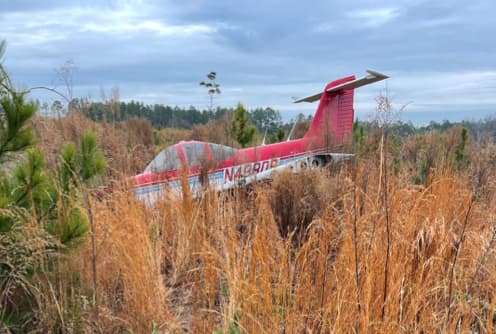The partial loss of engine power due to carburetor icing and the flight instructor’s failure to use carburetor heat in weather conditions conducive to serious carburetor icing.
aviation accidents
NTSB blames inadequate planning for mid-air collision at air show
On Nov. 12, 2022, a Boeing B-17G bomber and a Bell P-63F fighter collided inflight during a performance at the Commemorative Air Force’s Wings Over Dallas air show. Both airplanes crashed, killing all five aboard the B-17G and the sole occupant of the Bell P-63F.
Fuel exhaustion leads to forced landing
The pilot’s improper fuel management, which resulted in fuel exhaustion and a total loss of engine power.
Pilot seriously injured when plane encounters downdraft on departure
The airplane’s exceedance of its critical angle of attack after encountering a downdraft during departure, which resulted in an aerodynamic stall and impact with terrain.
Human Factors: A cold, hard lesson
The pilot’s cold weather start technique is blamed for accident when his Cessna 172’s engine quits due to a lack of oil.
Cessnas collide in run-up area
The pilot’s failure to maintain clearance from another airplane while taxing in the run-up area.
Failure to use checklist leads to fuel starvation
The pilot’s improper fuel management, which resulted in a total loss of engine power due to fuel starvation. Contributing was the pilot’s failure to use the checklist aboard the airplane during her attempts to restore engine power.
Carb ice interrupts training flight
A partial loss of engine power as a result of carburetor ice.
GA accidents and flight hours up, while fatal accidents continue downward trend
“Pilot-related accidents remain around 70%, with loss of control events continuing to be the leading causal factor and weather-related accidents remaining highly lethal,” Air Safety Institute officials said.








